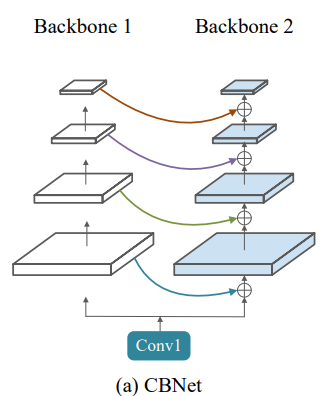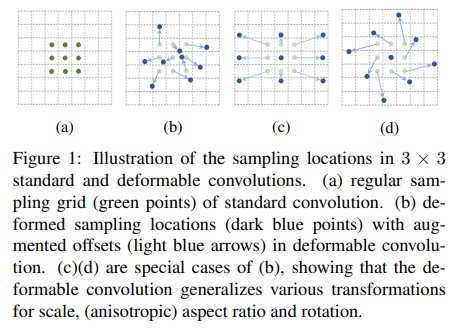CDeC-Net: Composite Deformable Cascade Network for Table Detection in Document Images

Illustration of complex table detection results. Blue and Green colored rectangles correspond to ground truth and predicted bounding boxes using CDeC-Net.
Abstract
The proposed network consists of a multistage extension of Mask R-CNN with a dual backbone having deformable convolution for detecting tables varying in scale with high detection accuracy at higher IoU threshold.
Our solution has three important properties:
- a single trained model CDeC-Net‡ performs well across all the popular benchmark datasets;
- we report excellent performances across multiple, including higher, thresholds of IoU;
- by following the same protocol of the recent papers for each of the benchmarks, we consistently demonstrate the superior quantitative performance.
CDEC-NET: COMPOSITE DEFORMABLE CASCADE NETWORK

Cascade Mask R-CNN
- Cascade Mask R-CNN has a similar architecture as Cascade R-CNN, but along with an additional segmentation branch, denoted by ’S’, for creating masks of the detected objects.
- The network head takes ROI features as input and makes two predictions — classification score (C) and bounding box regression (B).
- CDeC-Net comprises of a sequence of three detectors trained with increasing IoU thresholds of 0.5, 0.6, and 0.7, respectively.
Cascade R-CNN
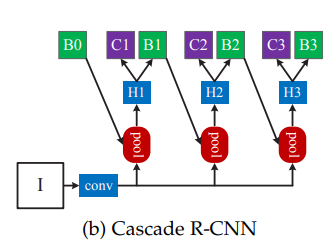
Composite Backbone
We use a dual backbone based architecture which creates a composite connection between the parallel stages of two adjacent ResNeXt-101 backbones (one is called assistant backbone and other is called lead backbone).
CBNetV2: A Composite Backbone Network Architecture for Object Detection
Deformable Convolution
We replace the fixed receptive field CNN with deformable CNN [22] in each of our dual backbone architectures. The gird is deformable as each grid point can be moved by a learnable offset.
Deformable Convolution
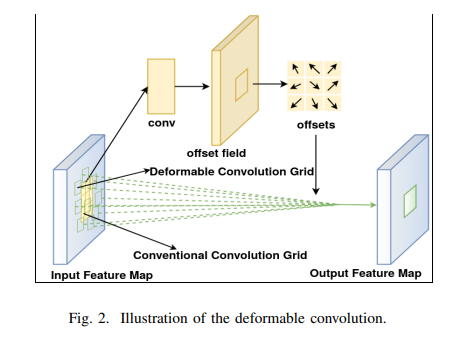
EXPERIMENTS
-
We observe from the table that CDeC-Net outperforms state-of-the-art techniques on ICADR2013, UNLV, Marmot, TableBank, and PubLayNet datasets.
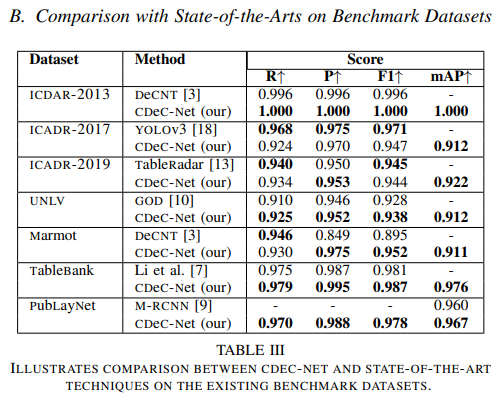
-
ILLUSTRATES COMPARISON BETWEEN THE PROPOSED CDEC-NET AND STATE-OF-THE-ART TECHNIQUES ON ICDAR-2013 DATASET
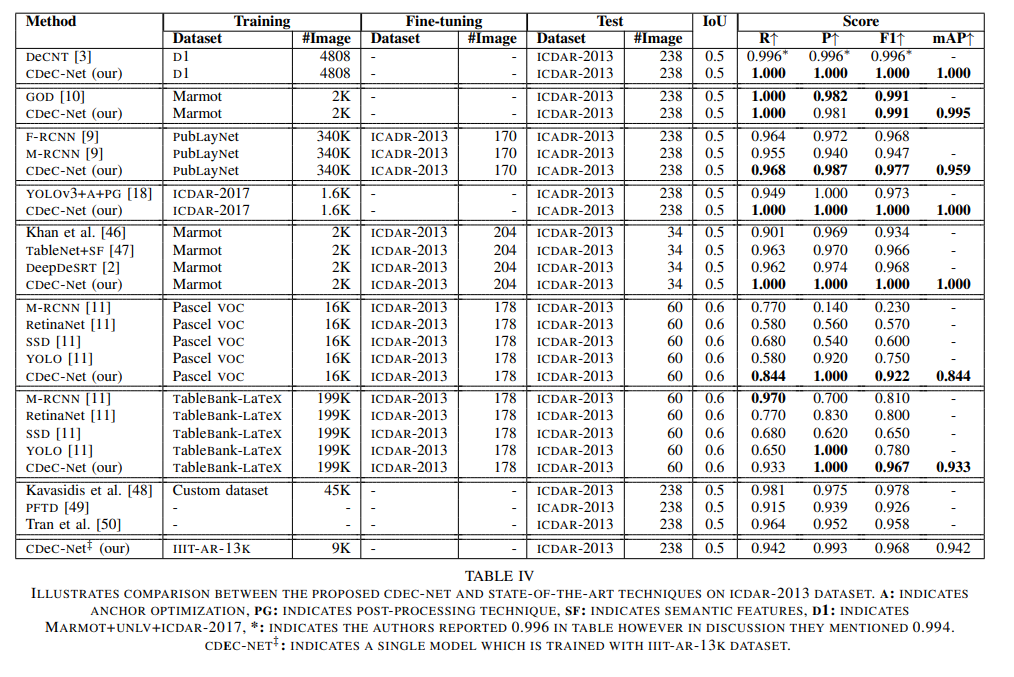
-
ILLUSTRATES COMPARISON BETWEEN THE PROPOSED CDEC-NET AND STATE-OF-THE-ART TECHNIQUES ON ICDAR-2019 DATASET.
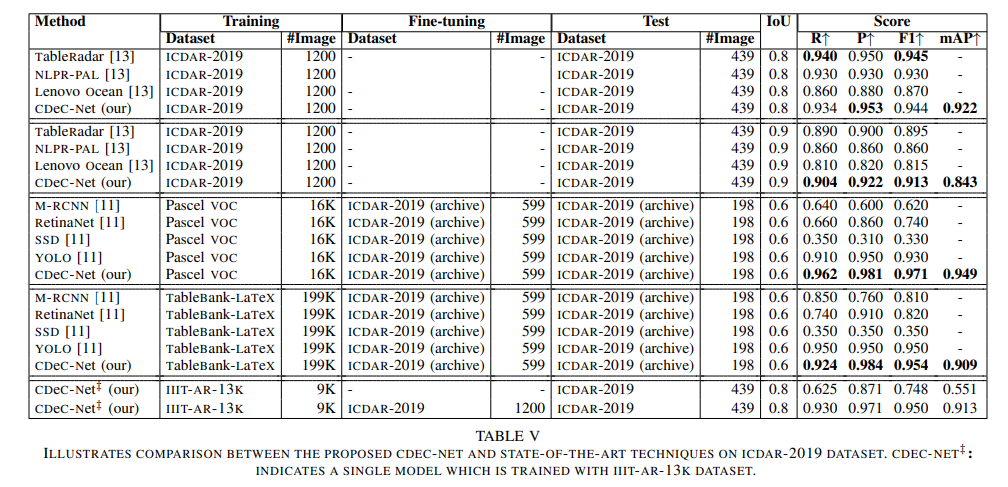
-
Shows examples where CDeC-Net fails to accurately detect the tables.
 While our single model CDeC-Net‡ fails to predict bounding boxes corresponding to tables present in the documents.
While our single model CDeC-Net‡ fails to predict bounding boxes corresponding to tables present in the documents.
